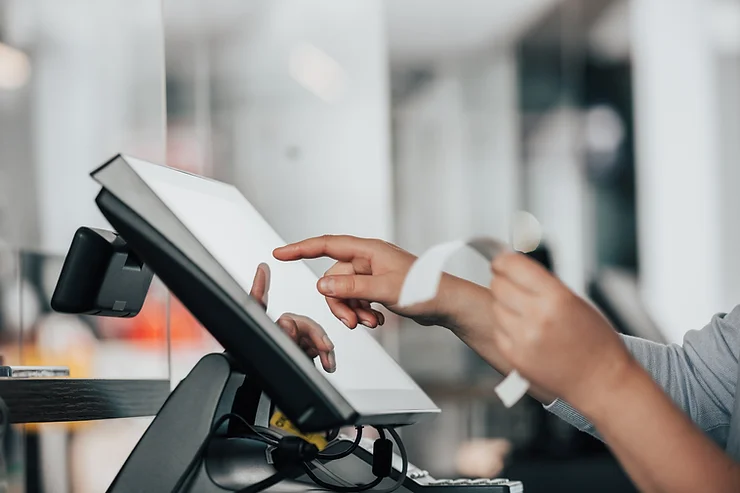
- October 15, 2024
1. Introduction
The COVID-19 tailwind is boosting the rising transition from brick-and-mortar to eCommerce, which has been putting a strain on brick-and-mortar retail. By leveling the playing field, Smart Retail technologies are assisting physical retailers in competing with internet stores. Digitalization and the use of artificial intelligence (AI) for automation and advanced analytics result in a physical shopping experience that is on par, if not better than a purely digital one, with benefits for both the customer and the store.
Intelligent automation and in-store analytics result in operational improvement and cost savings for the retailer. Artificial intelligence (AI) is being utilized to boost customer traffic, improve loss prevention measures, and optimize retail layout, shelves and displays, inventory, and employee productivity. It delivers data and insights that are used to improve foot traffic, better target promotions, and cultivate long-term client relationships, among other things.
2. Intelligent vision is the king in smart retail
While various types of sensors are employed in Smart Retail and IoT solutions (for example, RF, motion, pressure, temperature, and so on), vision is the foundation and leading solution for robust, dependable, and accurate data collecting in complex systems and settings. Intelligent vision is required for most analytics and automation applications in physical and multi-channel retail.
It’s the same in retail as it is in manufacturing and automobiles. Any warehouse robotic system, as well as an automated arm or conveyor belt at a supermarket checkout, must be able to see what and where it is going. Although autonomous robots have many sensors, they rely on cameras.
This isn’t to argue that having a vision is always sufficient. Other sensors can be used to supplement, augment, and cross-reference video data, which is especially valuable in areas where vision is limited.
3. Intelligent vision at the retailer’s edge
Retailers have been early users of AI in general due to the evident business benefits of AI-based analytics. Vision has become increasingly intelligent as a result of the incredible advancements in edge AI technologies. We went from deploying cost-effective devices that analyze and extract rich information on the spot and in real-time to running AI-based video processing on massive servers in the cloud with high latency and at a significant cost. A cloud-based analytics implementation necessitates storage, analysis, and bandwidth, all of which can be costly if raw video content is delivered to the cloud. The ability of a retailer to protect client data is also crucial.
In recent years, vision-based Smart Store solutions have become more prevalent in a variety of market sectors, with grocery leading the way. Seamless checkout solutions are the most robust and exciting:
3.1 Just-walk-out stores and kiosks:
Pick-and-pay or pick-and-go stores and kiosks are sometimes known as just-walk-out stores and kiosks. This is usually a small convenience store where a consumer can use her phone to enter the store, select the things she wants, and, as the name implies, simply walk out with them to be instantly invoiced. Cameras are used in these systems, which are occasionally combined with additional sensors. As those who have tried to fool the system on multiple occasions will attest, cameras watch shoppers and products and appear to be shoplifting-proof. The most well-known is Amazon Go, but several other grocery and convenience stores have partnered with AI businesses to develop their own.
3.2 Smart shopping carts
The cart keeps track of the items that are inserted (or removed) and allows for in-cart payment (whether through the mobile app or an onboard POS device). An intelligent camera serves as the central sensor, identifying products as they are placed in the cart. Pressure sensors are added to the bottom of some carts to cross-reference weight data with visual input. A smartphone app or an on-cart touchscreen allows the customer to interact with the shopping cart.
3.3 Intelligent checkout:
At the store’s exits, a counter, kiosk, or gate visually scans the things in a shopper’s cart, basket, or placed on a conveyor belt. The smart camera detects and recognizes the products, and the purchase is billed using a POS system or a mobile app.
Aside from Smart Store and Smart Checkout, vision is important in smart in-store advertising (for example, signage and displays that respond to the demographic data of the customer in front of them) and AR/VR (Augmented or Virtual Reality) applications like Smart Mirrors and virtual try-on.
4. Retail’s high-performance, high-efficiency edge
In practice, excellent AI processing speed and power efficiency in an edge device for Smart Retail and intelligent analytics applications enable:
Connect numerous cameras to a single computing device (such as an NVR (Network Video Recorder) or an Edge AI Box) and use AI processing to automate and analyses all video streams in real-time. The number of cameras that can be employed depends on the camera resolution and frame rate, as well as the neural network models that are used.
Combine data from various sensors – as we’ve seen, many Smart Retail solutions use a variety of sensors. Because video processing is a part of a broader data pipeline in such systems, the output from each frame of video processed may need to be cross-referenced or merged with other data, such as RF, pressure, or position data. A strong and efficient AI processor can handle several data streams concurrently and in real-time, just as numerous video streams.
5. Conclusion
These formidable capabilities translate into improved business outcomes and a faster return on investment for retailers. They no longer have to compromise on their in-store video analytics requirements; they can now improve loss prevention while also benefiting from extensive customer analytics.



